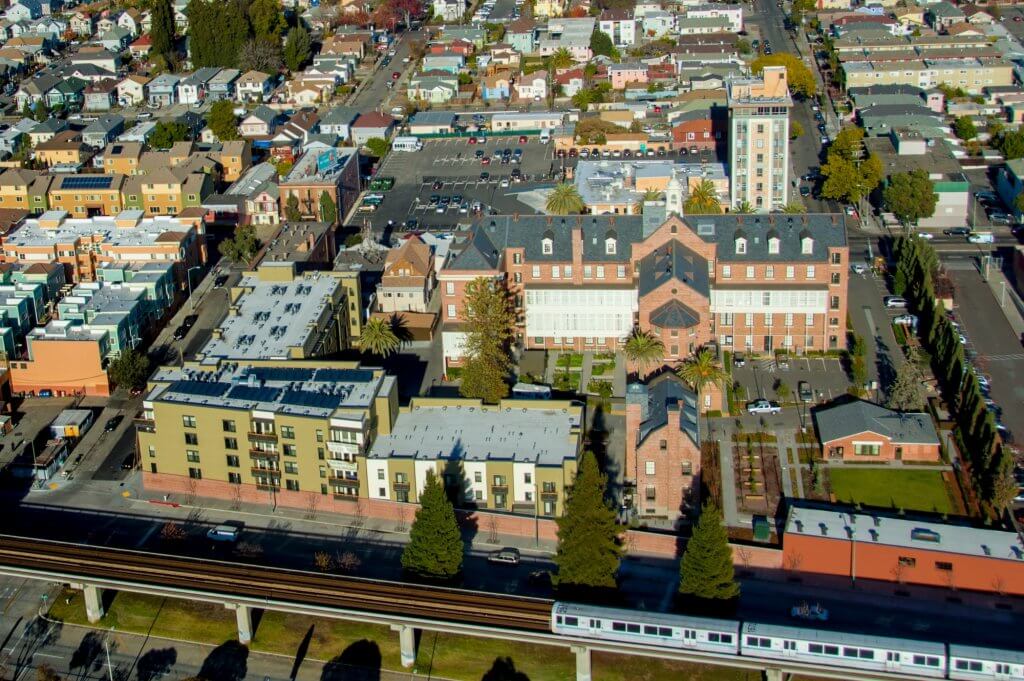Residential Land Use Regulation and the Spatial Mismatch Between Housing and Employment Opportunities in California Cities
Published On January 21, 2020
by Noah Durst, Michigan State University
This paper is part of a working paper series that utilizes the Terner Center California Residential Land Use Survey to assess the implications of California’s state and local policies for housing. The working paper series is published jointly by the CALIFORNIA ASSOCIATION OF REALTORS®’s Center for California Real Estate and the Terner Center for Housing Innovation at UC Berkeley. Read the full paper here.
When workers can’t afford to live near where they work that often translates into longer commutes and more time spent in traffic—an increasing reality for many Californians amid the state’s housing crisis. Low-income and racial or ethnic minorities disproportionately bear the brunt of the mismatch between jobs and housing, in part because they are less likely to be able to afford housing options in high-opportunity communities. While local land use policies have been shown to shape patterns of exclusion and inclusion, to date, there is little evidence regarding the relationship between spatial mismatches and residential land use regulation.
Using data from the Terner California Residential Land Use Survey, the American Community Survey, and the Longitudinal Employer-Household Dynamics Origin-Destination Employment Statistics, I examine the relationship between land use regulations and six spatial mismatch indicators in cities across California. These indicators capture imbalance, including the mismatch between residents and workers employed in a city, low-income jobs and affordable housing units in a city, and the earnings of employed residents and workers in a city. I also measure commute burdens by calculating the percentage of workers who live in the city in which they work and the share of workers who commute more than 10 minutes and more than 30 minutes from home to work. My analysis highlights several important takeaways for stakeholders and policymakers:
Cities with affordable housing incentives, urban growth boundaries, and eased restrictions on accessory dwelling units (ADUs) have lower commute burdens.
Cities that incentivize affordable housing development through tools such as expedited permit review, reducing fees, or easing height, parking, or transportation mitigation requirements demonstrate lower commute burdens for workers, after controlling for key variables. Urban growth boundaries are associated with a 5 percentage point higher share of workers residing within city limits, and lower shares of workers with long commutes. Similarly, cities without lot size restrictions on ADUs have a 2.3 percentage point higher share of workers who reside in the city and 2.3 and 1.9 percentage points lower shares of workers with commutes over 10 and over 30 minutes, respectively.
Cities with affordable housing incentives and no lot size restrictions on ADUs have a better balance between residents and workers, as well as between affordable units and low-income workers.
Cities that provide more incentives for housing development have larger shares of residents relative to workers than those that offer fewer incentives, and provide more affordable units relative to low-income workers. Similarly, cities that restrict ADUs to lots of a certain size house fewer affordable units relative to their low-income worker population.
Cities that prohibit high-density development house residents with higher earnings than local workers.
California cities with higher-density zoning demonstrate more balance between the incomes of residents and the local workforce than cities that prohibit dense development. However, cities zoned for higher densities also have lower numbers of residents relative to workers and fewer affordable housing units relative to low-income workers. This may reflect the fact that high-density areas are often zoned for mixed-use development that accommodates both housing and jobs, some of which are low-wage.
Local governments can draw on a number of policy tools to encourage affordable housing development and reduce commute burdens for their local workforce.
By removing restrictions on minimum lot sizes for ADUs and parking restrictions, as well as actively incentivizing affordable housing, cities can improve the balance between housing and employment and build more equitable communities.





